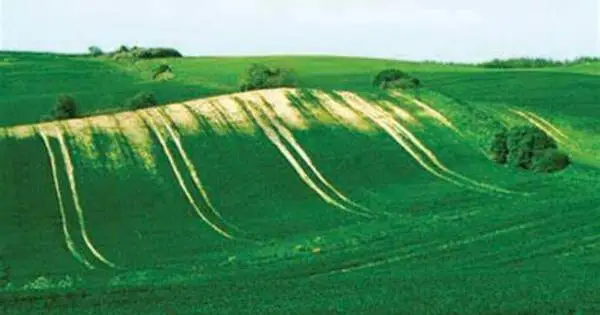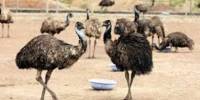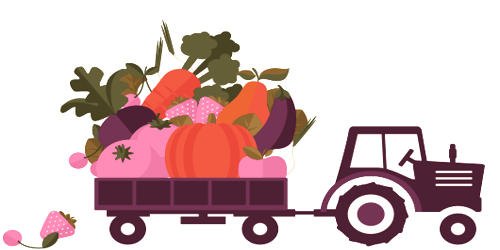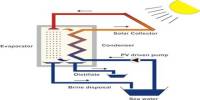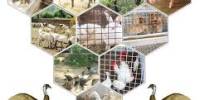Tillage erosion is a type of soil erosion that occurs in cultivated areas due to soil movement caused by tillage. It is also known as soil erosion by tillage and refers to the process of soil degradation produced by mechanical disturbance of the soil during agricultural practices. There is mounting evidence that tillage erosion is a key soil erosion process in agricultural lands, outpacing water and wind erosion in many fields across the world, particularly on sloping and hilly terrain. This type of erosion occurs when soil is turned over, tilled, or plowed for various farming activities.
A signature spatial pattern of soil erosion shown in many water erosion handbooks and pamphlets, the eroded hilltops, is actually caused by tillage erosion as water erosion mainly causes soil losses in the midslope and lowerslope segments of a slope, not the hilltops.
Tillage erosion results in soil degradation, which can lead to significant reduction in crop yield and, therefore, economic losses for the farm. It can have several adverse effects on the environment and agricultural sustainability, including:
- Loss of Topsoil: Tillage has the potential to disturb the fertile topsoil layer, which contains important minerals and organic matter for plant growth. As a result, soil fertility and agricultural productivity suffer.
- Soil Compaction: Heavy gear used repeatedly during tillage can compact the soil, decreasing its ability to absorb water and air. Compacted soil is less conducive to root growth and can harm crop health overall.
- Increased Runoff: Tilled soil has a lower ability to retain water, resulting in more surface runoff. This runoff can take precious topsoil, nutrients, and agrochemicals away from water bodies, contributing to water pollution and sedimentation.
- Soil Erosion: The disruption of soil structure through tillage makes it more susceptible to wind and water erosion. This can result in the loss of soil, leading to land degradation and decreased agricultural productivity.
- Environmental Impact: It can cause carbon dioxide to be released into the atmosphere, leading to greenhouse gas emissions. It can also destabilize soil ecosystems and harm soil-dwelling creatures.
Many farmers and agricultural operations have developed conservation tillage measures to alleviate the negative consequences of tillage erosion. These strategies, such as no-till or reduced tillage, aim to reduce or eliminate the severity of soil disturbance during planting and cultivation. Conservation tillage aids in the preservation of soil structure, the reduction of erosion, and the improvement of overall soil health and sustainability in agriculture.
